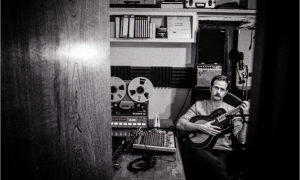To put the lasting impact of his accomplishment in perspective, think of an influential jazz recording made 50 years before Coltrane laid down “Giant Steps" on May 5, 1959. You can't. There was none, because jazz as a distinct form of music did not exist on May 5, 1909. “Giant Steps" is a monument to the evolution of the art of jazz in less than half a century, a phenomenon unprecedented in any other fundamental genre of music. Coltrane's rhythm section was Tommy Flanagan, piano; Paul Chambers bass; Arthur Taylor, drums. It has sometimes been pointed out that in his solo Flanagan seems less than comfortable with the changes. If you are a musician, imagine how comfortable you would be negotiating that minefield of chords if the music were set before you for the first time at a record session.
I am not sure that the video clip below explains what about “Giant Steps" led to an opening up of the approach to jazz improvisation. Indeed, I am not sure that Coltrane's artistry can be explained; the quotients of mystery and spirit in his music are as essential as his quantifiable elements of musicianship and saxophone technique. The clip certainly shows what his astonishing solo on the piece is made of. Thanks to longtime Rifftides reader Dick McGarvin for bringing this to our attention. Hold onto your seats and, as Dick says, follow the bouncing ball.
After you have played or sung along with Coltrane, you may wish to take a few moments to read some of the more than 1,500 comments from YouTube viewers about “Giant Steps." They range from the simplistic but inarguable:
this is really coool ..
To those that will boggle the minds of laymen:
Look for the tonal centers. The starting B chord throws people off, it can be treated as a Bmin7, giving you 6 beats in G, 6 beats in Eb, 6 beats in G, 4 beats in Eb and 4 beats in B; then 8 beats in Eb, 8 beats in G, 8 beats in B, 8 beats in Eb. The last bar is a turnaround in B to bring you back to the initial chord- you can play the D# to D to emphasize the change in tonal center or play a B. Find the pivot tones that adjacent tonal centers have in common to play across the bar lines.
En masse, the comments emphasize the impression that Coltrane's performance has made on jazz listeners and jazz players, most of whom were probably not born when he recorded it.
The album Giant Steps is a basic repertoire item, a necessity in any serious collection.



























